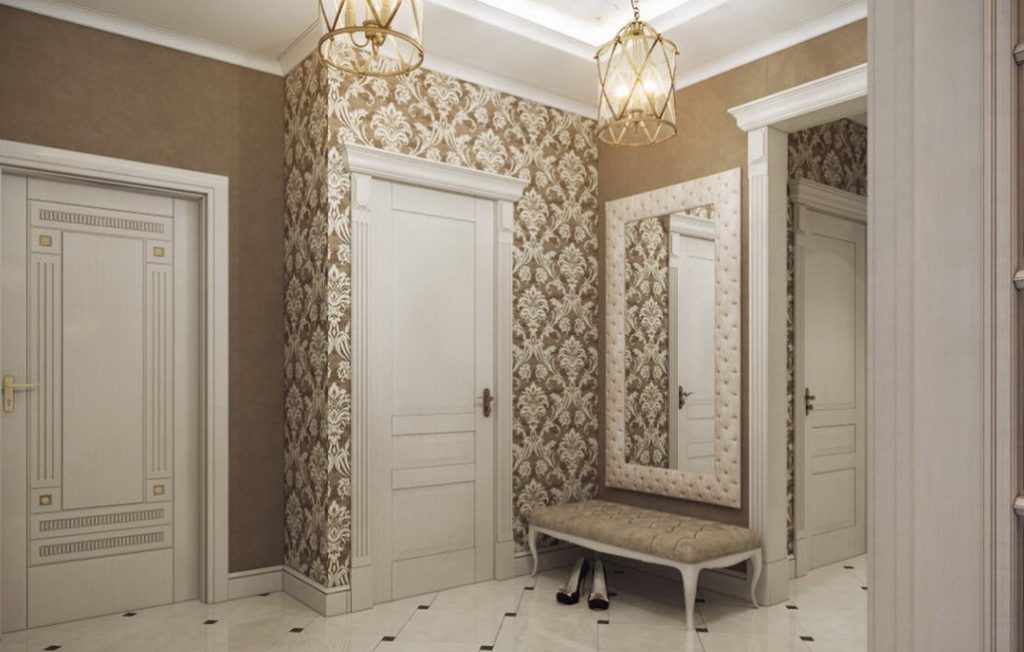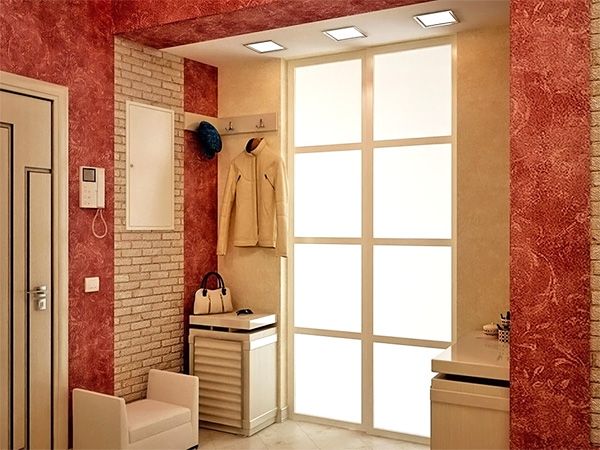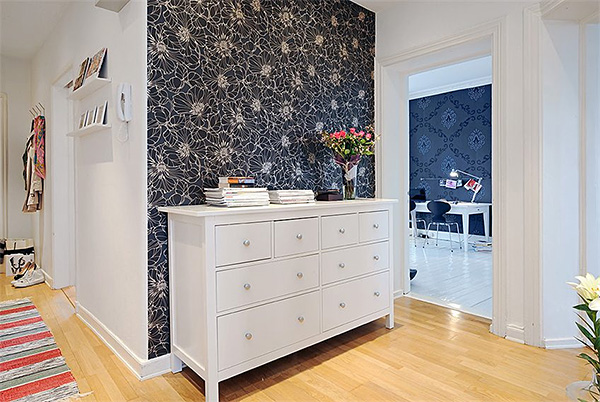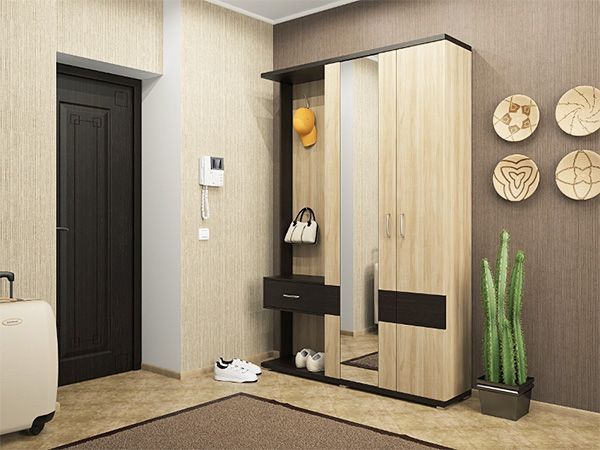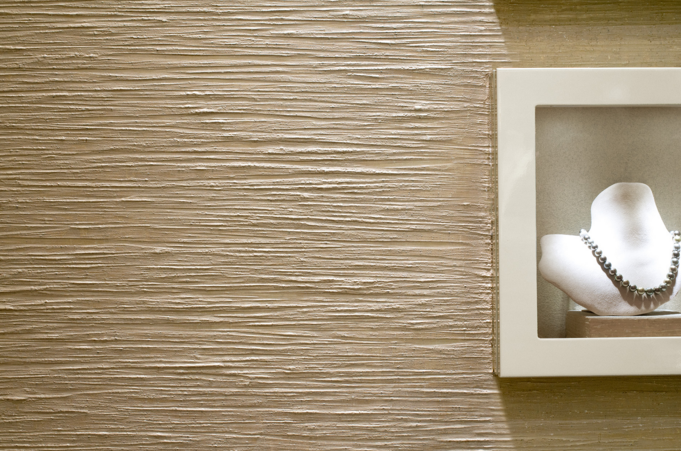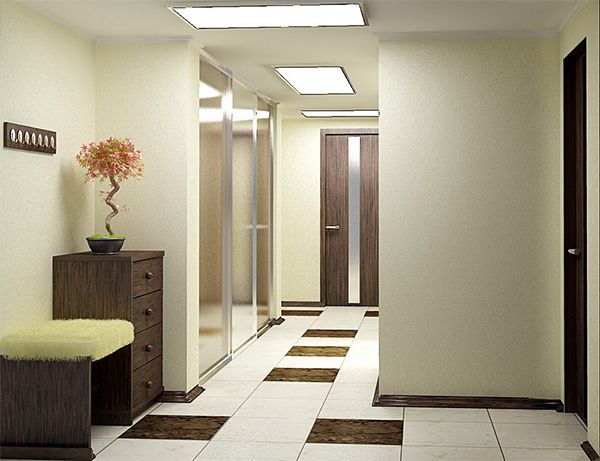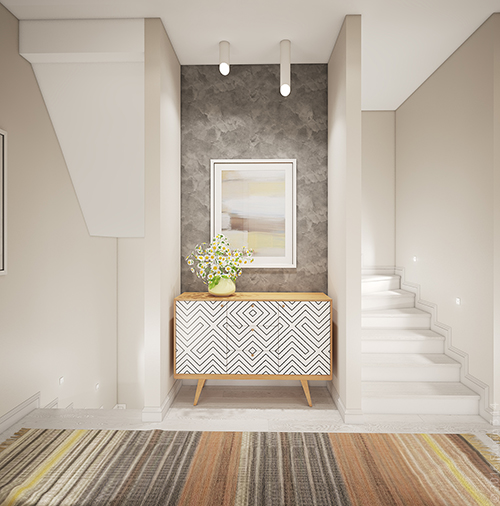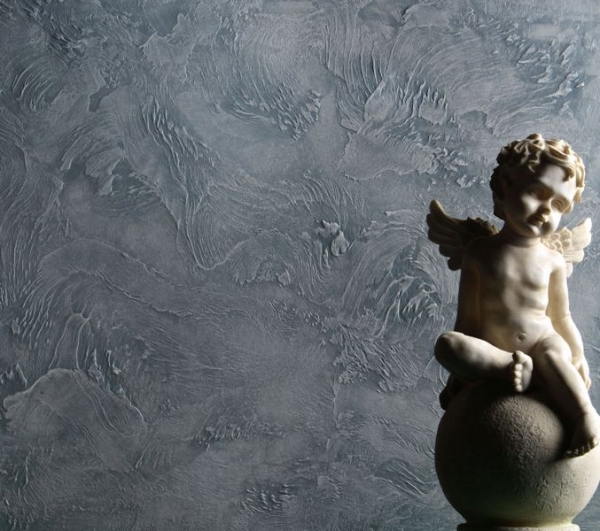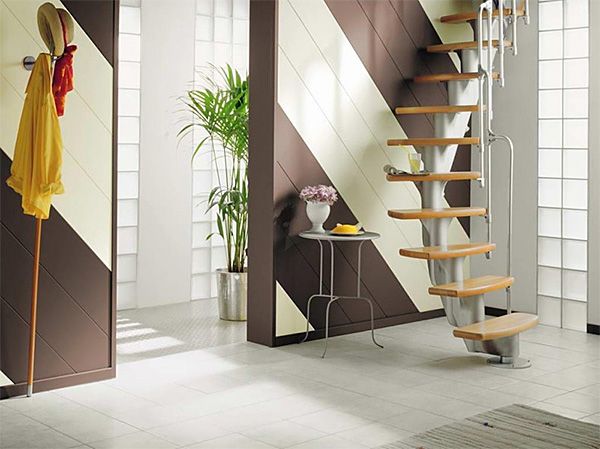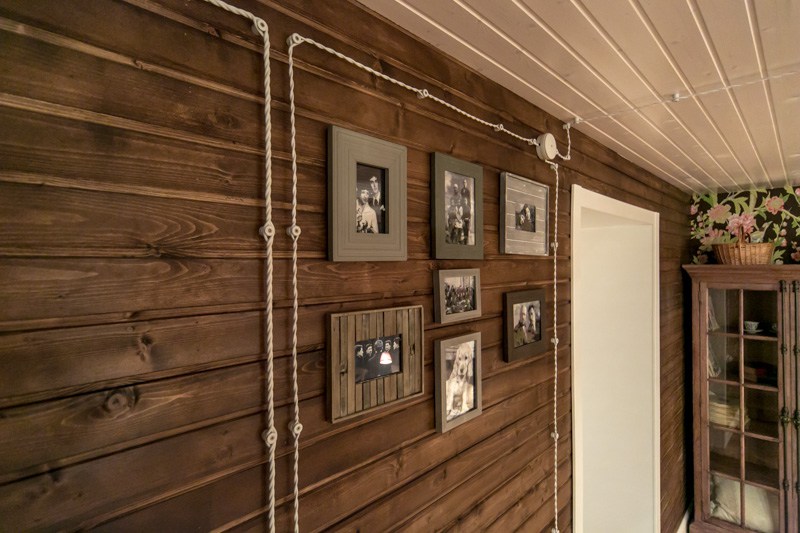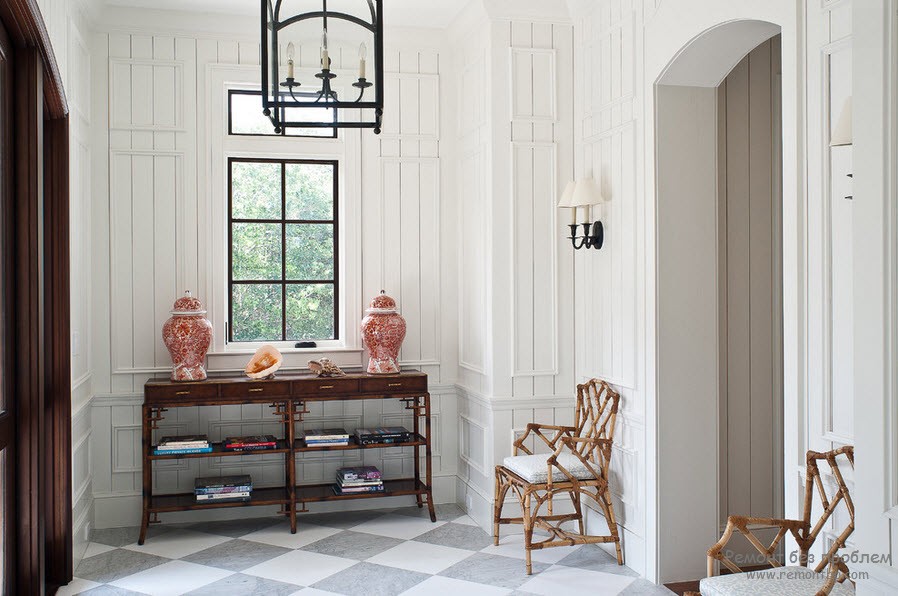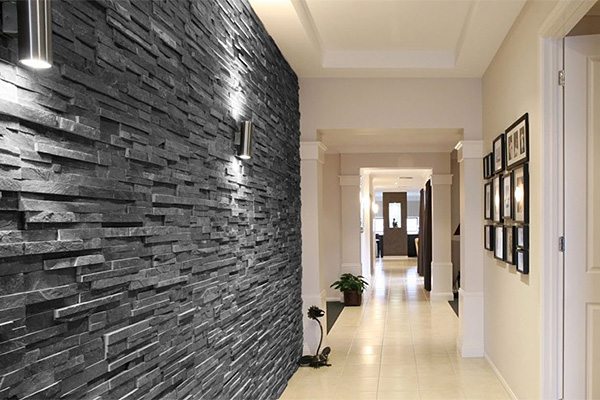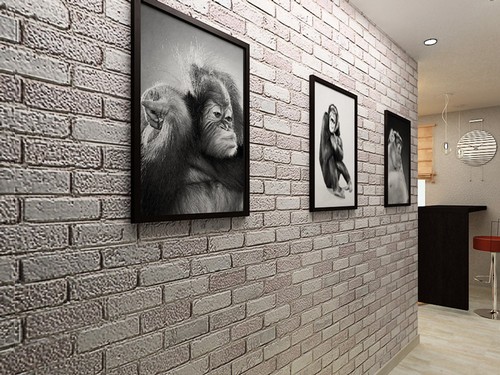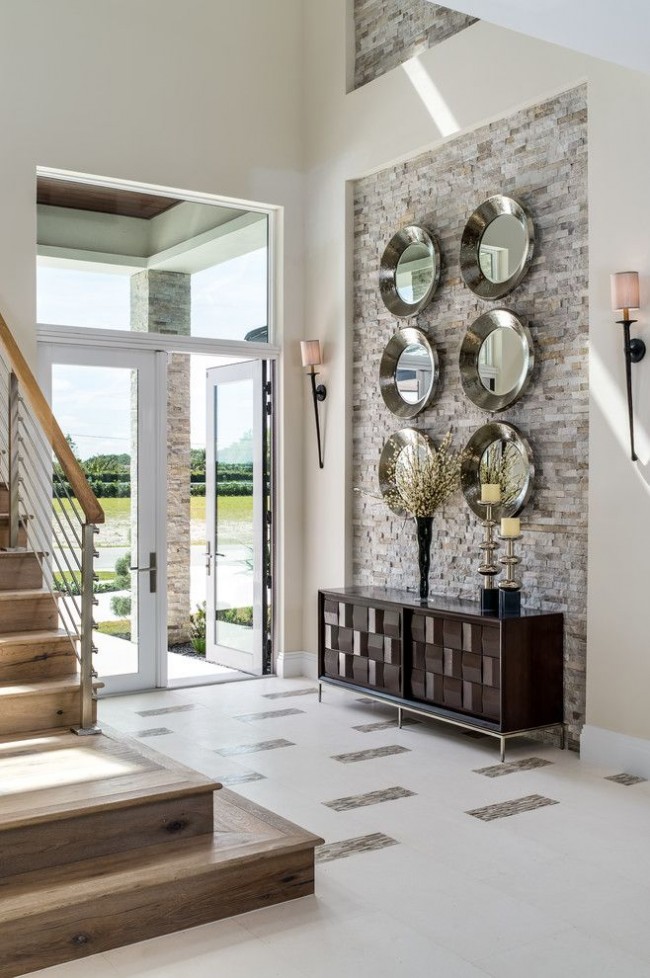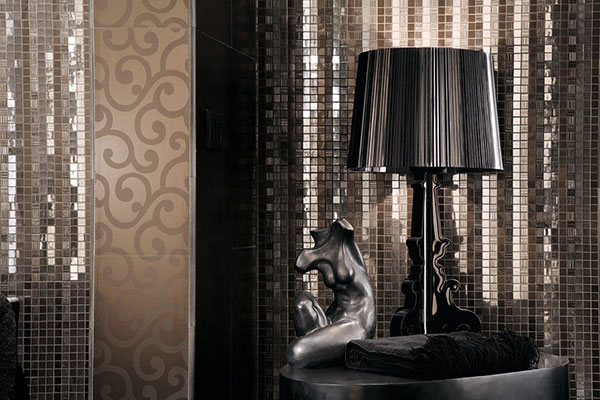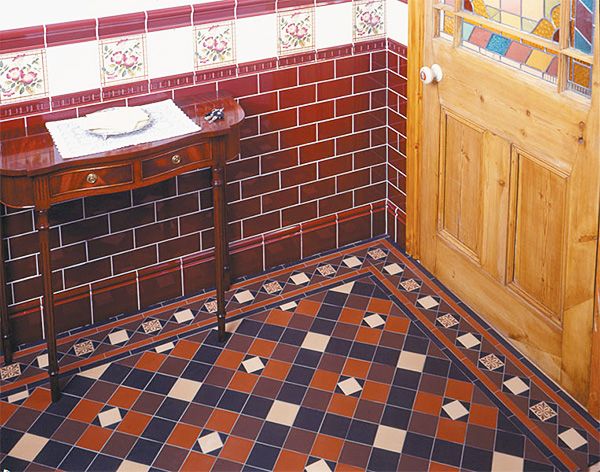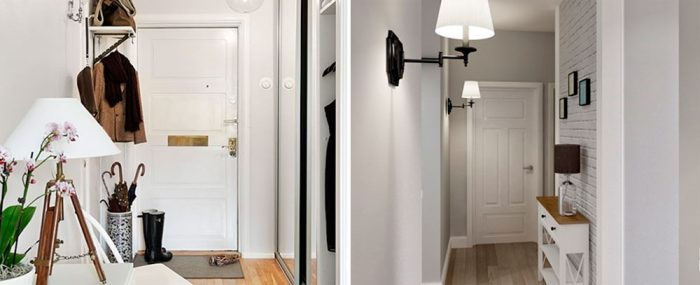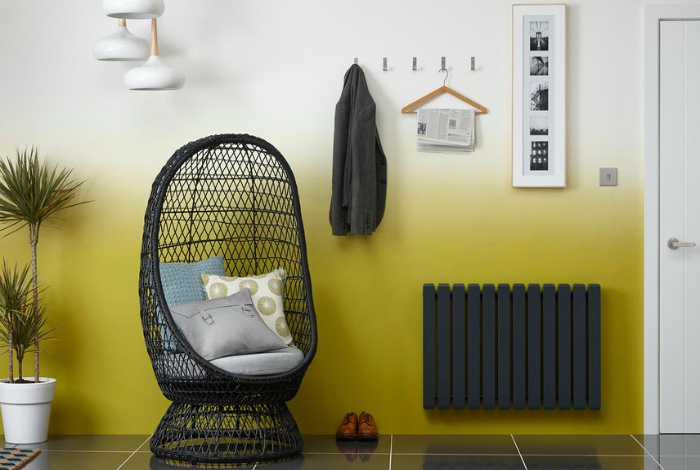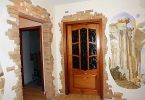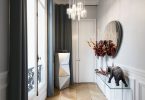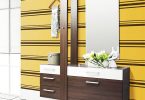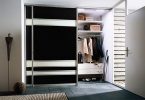An entrance hall is always a zone with the highest traffic load, in any apartment, regardless of its area. Therefore, without exception, all finishing materials should be practical, reliable and easy to repair if necessary. This is especially important in homes where children live (lovers of wall art) and cats who want to sharpen their claws about everything..
Content
- We use different types of wallpaper
- Decorative plaster
- Wall panels
- Choosing an artificial stone
- Ceramic tiles in the design of the hallway
- We paint the walls
Wall coverings in the hallway should be easy to maintain, not easily soiled, in line with the overall design concept of the home. They just owe it hard «endure» washing after regular dirt, moisture and mechanical stress. Therefore, materials that require delicate handling are inappropriate here..
We use different types of wallpaper
The only wallpaper that is not suitable for the hallway is paper. Their durability will not be enough for this room. But there are several coating options that perfectly meet the requirements of strength and aesthetics:
- Vinyl wallpapers. They are relatively inexpensive and very varied in terms of designs. The texture of these coatings is dense enough to hide imperfections in the base. Among the advantages are attractive appearance, washable and wear resistance.

Wallpaper in a large horizontal strip in the hallway
- Cork – paper-based. They are hypoallergenic, ideal for decorating an eco-style hallway. They can be washed. And cork is also a completely safe natural material, very pleasant to the touch and with anti-static properties (that is, dust will not accumulate on the walls).
Wallpaper with a contrasting pattern
- Liquid wallpaper – easy to apply and form an attractive repairable surface due to the textile fibers included in the composition. This type of coating will be optimal if a hallway with complex wall outlines – protrusions, arches, niches is being made, since this elastic material does not form seams.
Liquid wallpaper looks like decorative plaster
Liquid wallpaper is a dry mixture that is independently diluted with water, or a completely ready-made pasty composition, which is applied to the wall by spray or knurling. Thickness can be varied during application, allowing the coating to be used in place of the traditional leveling compound. Among the advantages of liquid wallpaper are antistatic properties, the possibility of local repair and painting. It is believed that this material is not moisture resistant, but this drawback can be corrected by covering the surface with varnish.
The accent wall is covered with wallpaper with a pattern
- Glass fiber. This is a material with an expressive texture, intended for coloring – very durable and durable, able to resist even against cat’s claws. They are very easy to paint – both solid and using a stencil.
- Non-woven wallpaper is another type of paintable wallpaper. They are not as strong as those made of glass fiber, but they are also quite practical and attractive. You can choose a snow-white textured canvas and paint it up to 10 times, each time radically changing colors, or you can give preference to canvas with a pattern – it all depends on what design is planned.
Decorative plaster
Decorative plaster is one of the most interesting coatings in the hallway. Thanks to it, you can create any incredible stylizations, giving preference to imitations of textured natural stone, wooden walls damaged by bark beetle, bright smooth marble and so on..

decorative plaster for the corridor and hallway
Wall decoration with light plaster to match the furniture
There are several standard patterns that are popular in hallway decoration:
- Venetian plaster imitating noble marble;
- embossed and textured to create volumetric surfaces;
- fancy flock;
- velours;
- wet silk;
- sandstone.
Light plaster goes well with dark elements: furniture, tiles, baseboards and doors
Surfaces differ not only in motives, but also in the type of structure – they distinguish bark beetle, lamb, fur coat (spray) and coloring. You can vary the degree of expression of the pattern – depending on what size of plaster grain is chosen.
Variants of using colored plaster in the hallway
Important. Among the main advantages of decorative plaster are the variability of designs, the ability to cover «breathe», complete absence of odor during application and also increased strength indicators. And also with the help of this material you can create highly artistic paintings – such panels will transform any corridor.
Wall panels
Wall panels are considered a practical and durable finish. They are easy to install and do not require specific maintenance – a damp sponge in soapy water will be enough for cleaning. There are several types of wall panels suitable for installation in the hallway, and for some of them the manufacturers provide a 15-year warranty.
Natural wood panels
However, it cannot be said that the designs of this material are diverse. The most common colors are imitations of wood and marble. These solutions are most often chosen for minimalist interiors, in which it is important that the walls do not attract attention..
Plastic panels
There are two popular types of wall panels:
- Plastic. Lightweight, practical and durable material. In his collections you can find smooth monochromatic surfaces and interesting colors like small Provence flowers or high-precision imitations of masonry. Such surfaces are installed very quickly, since they do not require careful preparation of the base. There is one more thing – plastic panels themselves are cheap, but for their installation you will also have to purchase special frame elements and guides.
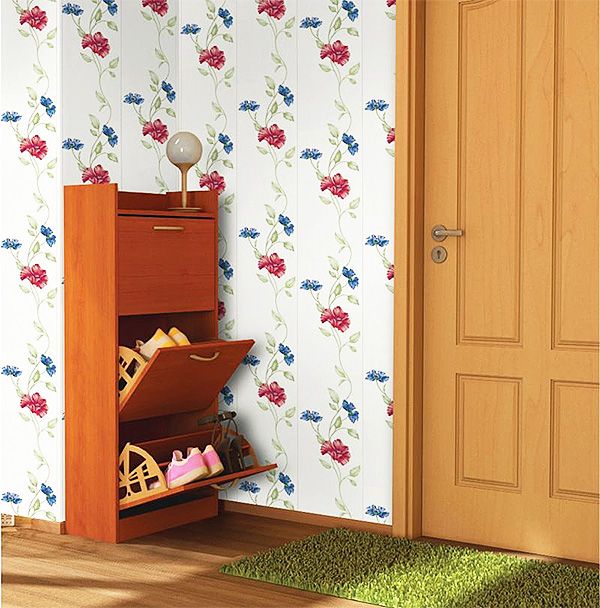
Bright plastic panels with a pattern
- MDF. They are attached according to the same principle as plastic, but they look much more respectable and stylish. But such textured sophistication affects the cost – MDF is more expensive than plastic. This material is somewhat more susceptible to moisture, has fewer colors, but is environmentally friendly.
MDF paneling of the lower part of the wall
Choosing an artificial stone
Artificial stone is a modern composite-based material. Its surface perfectly imitates natural materials, including:
- granite;
- onyx;
- marble;
- sandstone;
- wild rough stone;
- turquoise;
- malachite.
Gray decorative stone on the wall in the hallway
Sometimes the imitation is made so accurately that the products can only be distinguished by weight. At the same time, the artificial stone is lighter, which is an undoubted advantage in the decoration of living spaces..
The material is characterized not only by lightness, but also by strength, as well as environmental friendliness, because gypsum is considered its main component. But artificial stone is not cheap, besides, its texture «eats» space, and therefore it is rarely used for decoration «continuous», preferring in this way to place point accents. This can be either only the lower part of the wall that is most susceptible to wear, or areas near doorways, arches or niches, corners or protrusions.
Decorative stone looks very beautiful
Among the main advantages of decorative stone:
- Increased moisture resistance. Provided with a special upper protective layer that does not allow moisture to penetrate into the gypsum structure.
- Practicality, ease of care. To clean the surface, it will be enough to use a damp or dry cloth.
- High degree of resistance to wear – the protective layer protects the texture of the product from mechanical damage, so that even after cleaning it will not lose its decorative properties.
- Long life – if you can get the coverage right, it will last 10 years minimum.
- Ease of installation.
- Stability of geometry with sharp temperature changes.
- Flame retardant even when exposed to direct flame.
Ceramic tiles in the design of the hallway
Tile is considered a traditional material for kitchens and bathrooms. But among modern highly artistic collections, it will not be difficult to find materials with spectacular textures, ideal for decorating the hallway. It can be imitation of silk, wood, metal or silver fabrics, gold, leather.
Ceramic tiles on the walls of the hallway – why not
Important. For the hallway, you can choose single or double fired ceramic tiles. Each of these materials has high strength, but the one that was subjected to double firing is characterized by higher performance..
Hallway wall decoration with glossy tiles
In the hallway, ceramic tiles can be used everywhere – not only for wall decoration, but also for flooring. This material is considered environmentally friendly, since the main raw material for its manufacture is clay. Among the advantages are also:
- design variability;
- practicality;
- immunity to wear and tear – patterns and designs will retain their original splendor for a very long time;
- strength;
- durability – operation is possible for 20 years or more;
- resistance to temperature extremes;
- moisture resistance;
- easy to clean – the surface does not absorb dirt and is easy to clean.
We paint the walls
The paint can be used for finishing a plastered hallway – both in the case when the walls are simply leveled with plaster mortar, and when they are sheathed with plasterboard sheets. Wallpaper and decorative plaster can be painted. The coating created in this way can hardly be called luxurious and elegant, but it is practical, easy to update and helps to create a high-quality and easy-care background..
White walls for the hallway
However, for the hallway, only paint that creates a washable surface is suitable:
- water-based;
- latex;
- silicate;
- silicone;
- acrylic.
Each of these materials can only be applied on a perfectly flat surface, otherwise «will show through» all base defects.
Choosing a material for wall decoration in the hallway is not difficult if you initially focus on the required style and available budget. Among the materials presented, it will not be difficult to choose the appropriate finish.


